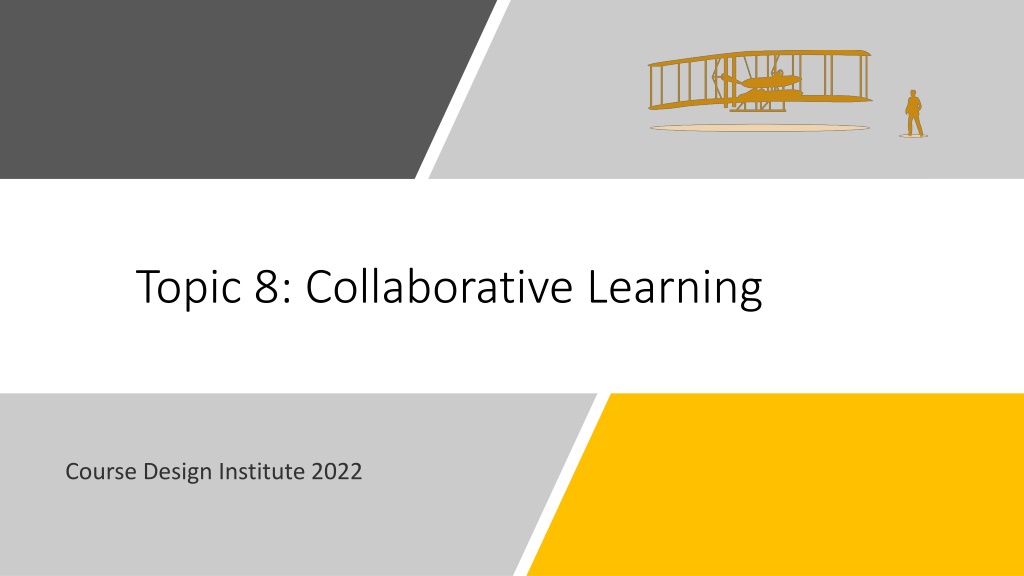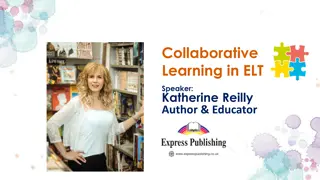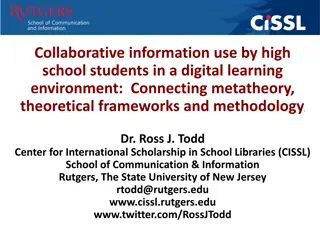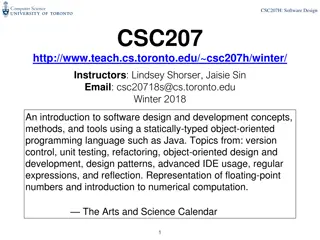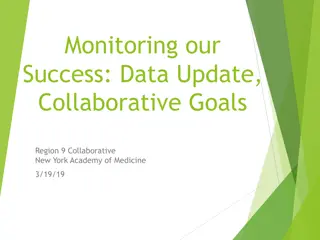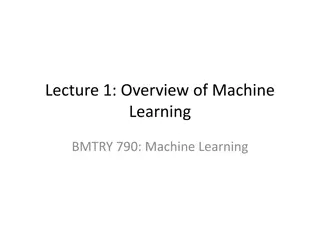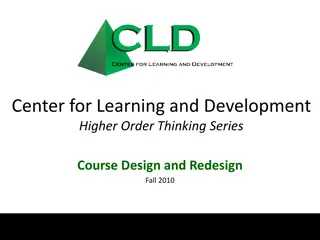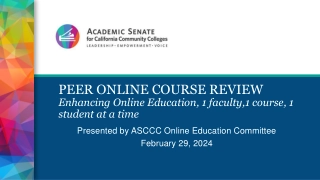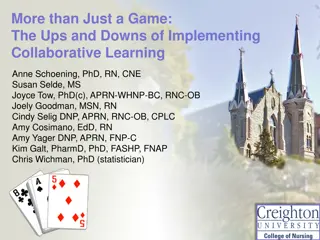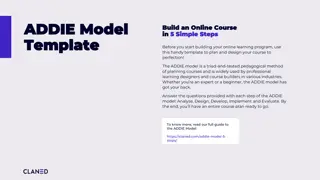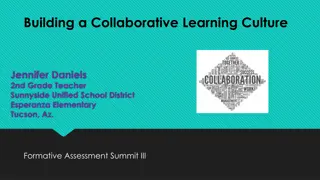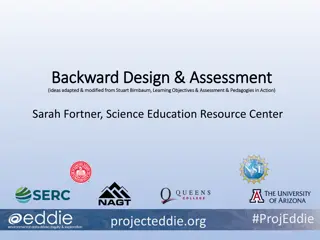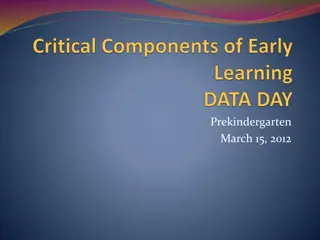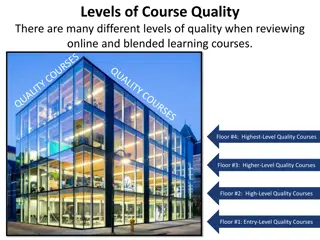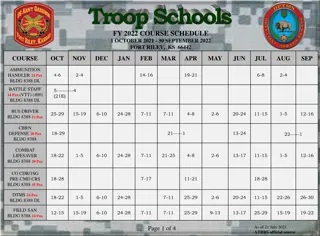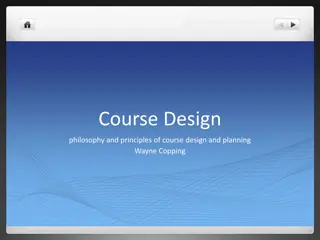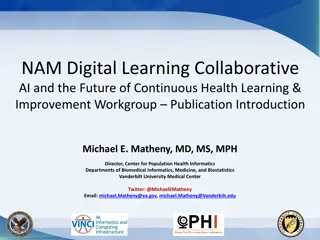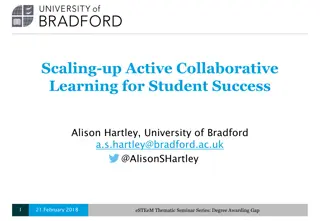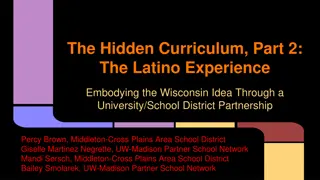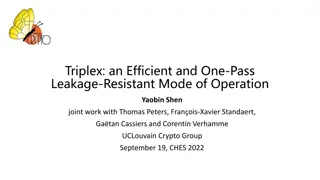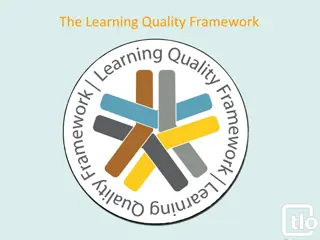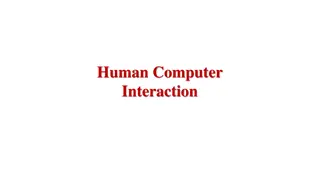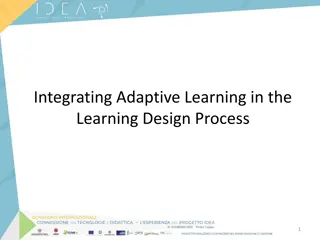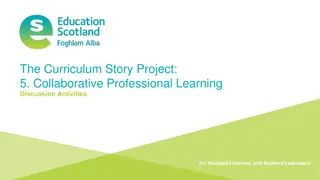Enhancing Learning Through Collaborative Course Design in 2022
Explore the benefits of collaborative learning in course design at the Collaborative Learning Institute 2022. Discover how engagement, teamwork, and social interaction amplify student learning, leading to improved communication and leadership skills. Dive into short-term partnership activities like Turn and Talk to promote active learning and peer-to-peer interactions. Embrace the shift towards collaborative pedagogical methods for a more effective and engaging educational experience.
Download Presentation

Please find below an Image/Link to download the presentation.
The content on the website is provided AS IS for your information and personal use only. It may not be sold, licensed, or shared on other websites without obtaining consent from the author. Download presentation by click this link. If you encounter any issues during the download, it is possible that the publisher has removed the file from their server.
E N D
Presentation Transcript
Topic 8: Collaborative Learning Course Design Institute 2022
Engaged Learning Phrases such as student engagement or engaged learning appear frequently in mission statements, departmental goals, programmatic outcomes, or strategic plans. Collaboration, interdisciplinarity, service learning, or community engagement also occupy prominent positions in our institutional goals, plans, and outcomes.
The 21st century workplace is increasingly collaborative, as businesses move away from individual cubicles to open, flexible workspaces where employees solve problems in teams. Students who work in teams develop better oral communication, self-management, and leadership skills. Team-based or cooperative learning increases the quality of student-faculty interactions, bolsters students self- confidence, and allows them to gain a greater understanding of peers from diverse backgrounds or perspectives. Collaborative learning can occur within a lecture-based instructional approach, it can complement lecture, or it can serve as the primary pedagogical method for a course. Collaborative Learning
Collaboration Fosters Engagement Social interaction amplifies students learning. We humans are hardwired for interpersonal connections. We also love to talk. When we provide opportunities for students to interact with each other during a lesson, we help them acquire knowledge, build skills, and connect with their peers. Collaboration also channels students natural tendency to talk in a more productive direction.
Collaborative Learning Level 1: Short-term Partnerships or Groupings Short-term collaboration builds brief student interactions into a given class period. Activities may last for just a few minutes or up to one or two full class periods. Short-term group activities tend not to be graded or to comprise only a small percentage of the student s grade. Examples include turn and talk, think-pair-share or write-pair-share, jigsaw and case studies. (explanations on the following slides)
Turn and Talk Plan one or two questions or discussion prompts for each lecture, coinciding with points where you most want students to internalize the content or make a connection to the ideas you re presenting. Say to the students, Turn and talk to someone near you about ___. Allow students a few minutes to discuss and then bring their attention back to your lecture. (Using a bell or similar auditory cue is a good way to signal that it s time for students to end their conversations return their attention to you.)
Think-Pair-Share Pause and ask students to think for a moment about an idea you ve just presented and write down their reactions. Wait for one or two minutes to allow them sufficient time to think about the prompt. Then instruct students to share their ideas with someone sitting nearby. Pause for one or two minutes again. Now direct student pairs to join another partner pair, making a group of four, who share their ideas. Pause for about five minutes to allow this conversation to take place. Ask the groups to appoint a spokesperson to share the result of this discussion with the entire class. This strategy encourages deeper interactions among students and helps them to better connect with the course content through their exchange of ideas.
Jigsaw and Case Study Jigsaw Divide a text among student groups. Each group reads and discusses their portion of the text, becoming the class experts on the topic you ve assigned them. Groups create a presentation to teach the content of the text to their peers. Case Study Provide each student group with a prepared case study relevant to the unit of instruction. Groups study the case and create a presentation to teach the relevant aspects of the case to their peers. This Photo by Unknown Author is licensed under CC BY-NC-ND
Collaborative Learning Level 2: Discussion Groups / Study Groups Students meet on a regular basis to discuss course content, complete assignments together, or prepare for exams. Study groups sometimes complete their work outside of scheduled class periods, apart from direct faculty supervision. Discussion groups more typically meet during regular class times, often with faculty or graduate assistants. The purpose is to support learning presented during class or in assigned readings, allowing students to assimilate course content through interpersonal interaction.
Study Group Strategies Study groups reinforce students learning of material presented in lectures and assigned readings. They might share notes from lectures, discuss concepts in the readings, or work collaboratively on their assignments. Study groups generally meet outside of regularly- scheduled class periods and do not typically receive direct support from faculty, nor do students usually receive a grade for their participation in a study group. Create groups with a balance between high- achievers, average students, and those who will probably require additional help. Provide groups with an outline or study guide containing specific questions for discussion, lists of available resources, and specific instruction as to which chapters or sections of course texts are the most important. This Photo by Unknown Author is licensed under CC BY
Discussion Group Strategies This approach to student collaboration provides opportunities to interact with course content in a smaller setting than a lecture hall. Students can share their ideas more freely, ask questions, and receive help from their peers. Discussion groups are more structured than study groups, often meeting during regularly-scheduled class time with support from faculty or graduate teaching assistants who can facilitate discussions and other learning activities. For example, a typical course meeting twice per week might devote the first class of the week to lecture and the second to discussion groups and active learning such as role-playing, case studies, or game scenarios that are not possible in a lecture hall. Students generally receive a grade for their participation in a discussion group, especially those that occur within the class period. by Unknown Author is licensed under CC BY-NC
How Do We Really Learn? Consider this: What I hear, I forget. What I hear and see, I remember a little. What I hear, see, and ask questions about or discuss with someone else, I begin to understand. What I hear, see, discuss, and do, I acquire knowledge and skill. What I teach to another, I master.
Eric Mazur, physics professor at Harvard University, uses a model of peer instruction that takes cooperative learning to the next level. Students complete several low-stakes assignments (problem sets) each week, with opportunities to re-do work if needed. Students bring their work to a collaborative study group where they discuss their answers. Being part of a group creates social motivation for students to stay on track because the group must function effectively together. Each person is essential for the group to be successful. Students read and annotate the textbook collaboratively and pose questions for one another. By the next class session, students have been working with the text and problem sets for several days and are prepared to learn. Advanced Cooperative Learning: Peer Instruction (pre-class) https://mazur.harvard.edu/rese arch-areas/peer-instruction
During class, the professor leads whole-class instruction for a few minutes, then breaks the class into their study groups to work together for most of the class session. The professor (plus teaching assistants, if available) circulate among the study groups. The professor poses a different problem for each group member to solve in turn, requiring them to restate the problem, articulate a plan to solve it, solve it, and review the results. The professor asks open-ended questions to find where students are confused, offers explanations, and asks them to try again. This approach is about leading students to learn, not handing them answers or delivering a long lecture about what they re supposed to learn. Advanced Cooperative Learning: Peer Instruction (during class)
Topic 8 Task Strategies for Collaboration Use the Topic 8 Worksheet to answer these questions: How might you adapt these strategies to your teaching? Which of your planned lectures might benefit from the addition of turn and talk or think-pair-share? Which lessons might fit well with jigsaw or case studies? How could you establish study groups, discussion groups, or peer instruction to enhance students learning?
